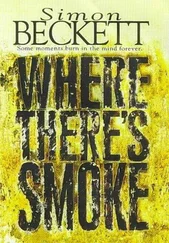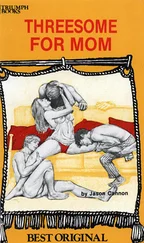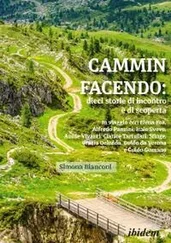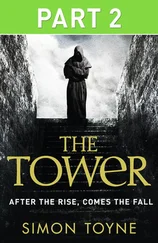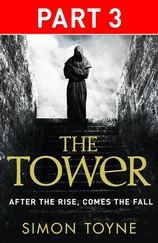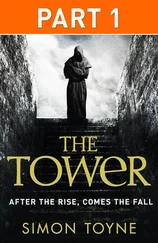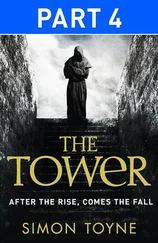Simon Foster - CHINA's Three Gorges & Xi'an
Здесь есть возможность читать онлайн «Simon Foster - CHINA's Three Gorges & Xi'an» весь текст электронной книги совершенно бесплатно (целиком полную версию без сокращений). В некоторых случаях можно слушать аудио, скачать через торрент в формате fb2 и присутствует краткое содержание. Год выпуска: 2010, Издательство: Hunter, Жанр: Старинная литература, на английском языке. Описание произведения, (предисловие) а так же отзывы посетителей доступны на портале библиотеки ЛибКат.
- Название:CHINA's Three Gorges & Xi'an
- Автор:
- Издательство:Hunter
- Жанр:
- Год:2010
- ISBN:нет данных
- Рейтинг книги:4 / 5. Голосов: 1
-
Избранное:Добавить в избранное
- Отзывы:
-
Ваша оценка:
- 80
- 1
- 2
- 3
- 4
- 5
CHINA's Three Gorges & Xi'an: краткое содержание, описание и аннотация
Предлагаем к чтению аннотацию, описание, краткое содержание или предисловие (зависит от того, что написал сам автор книги «CHINA's Three Gorges & Xi'an»). Если вы не нашли необходимую информацию о книге — напишите в комментариях, мы постараемся отыскать её.
CHINA's Three Gorges & Xi'an — читать онлайн бесплатно полную книгу (весь текст) целиком
Ниже представлен текст книги, разбитый по страницам. Система сохранения места последней прочитанной страницы, позволяет с удобством читать онлайн бесплатно книгу «CHINA's Three Gorges & Xi'an», без необходимости каждый раз заново искать на чём Вы остановились. Поставьте закладку, и сможете в любой момент перейти на страницу, на которой закончили чтение.
Интервал:
Закладка:
Allied & Communist Victory
The Allied victory in World War II and the devastating Hiroshima and Nagasaki bombs spelled the end for Japanese rule in China and, in spite of US support for the KMT, in 1945 it was the Communists who were better placed and prepared to stake their claim on the country. Although the KMT managed to retake the cities, the rural bulk of the country lay in the hands of the Communists. When the People's Liberation Army(formerly the Red Army) captured a US arms consignment they had not only the weaponry, but the public support and determination to win and the KMT crumbled. Chiang Kaishek fled to Taiwan, along with much of the treasure from the Forbidden City. In Taiwanhe established the Republic of China (ROC)with the now inconceivable aim of regrouping to return and reinstate the KMT in China.
Chairman Mao (1893-1976)
Early Years
One of the most iconic figures of the 20th century, Mao Zedong(aka Mao Tse Tung) was born in Hunan into a comparatively wealthy grain-dealing peasant family. He was schooled in Changsha and then continued his education in Beijing. In response to the humiliating terms of the 1919 Treaty of Versailles, Mao became involved in the anti-foreign May 4th Movement. Russia's Bolshevik Revolution and sponsorship of communist cells in China helped to convince Mao that socialism was the way forward and, when the CCP was founded in 1921, Mao was one of its key members.
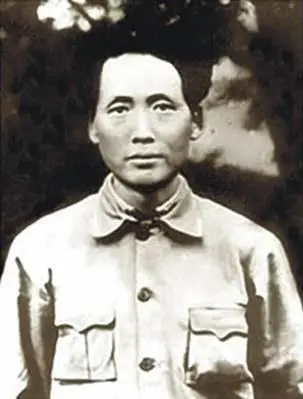
Mao in 1931
Rural Revolt
Mao's time teaching at Guangzhou's Peasant Training Institutein the early 1920s reinforced his socialist principles, but also convinced him that revolution must come from the rural masses. After Chiang Kaishek's purge of the CCP, Mao retreated to establish a Communist Red Army base in Jinggang Shanin Jiangxi and managed to hold out until 1934 when nationalist forces encircled the mountain. The Communist retreat took the form of the incredible Long March(see above), which resulted in huge loss of life and suffering, but it cemented Mao as the resilient leader of the CCP and helped to expand his power base. In spite of Soviet and US support for the KMT, the popular following Mao had engendered carried the CCP to victory.
Revolutionary Zeal
Mao Zedong was hardly seen in public for the first few years of and was at odds with many of the party's early policies. Reforms and successes soon gave way to failures spurred by Mao's belief that his revolutionary ideals had been usurped. The Great Leap Forwardand the Cultural Revolution(see below) were both a result of ideology overruling reason and had disastrous consequences for China's people, culture and economy. Although he was never a great statesman it was the powerful personality cult that Mao developed which allowed him to implement these crass plans. He was tempered to some extent by his second-in-command, Zhou Enlai, but Mao's third wife, Jiang Qingfueled his revolutionary zeal. The Cultural Revolution only really ended with Mao's death in 1976 and he was entombed in a grand mausoleum at the center of Tian'anmen Square.
Views of Mao
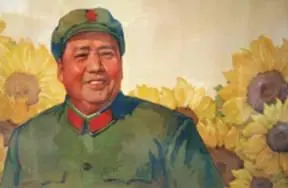
To western minds Chairman Mao's catastrophic mistakes vastly outweigh his achievements, but within China he is still respected, almost revered, and, although his mistakes are now recognized, they are seen as less significant than his contribution in re-establishing a unified China. The younger generation may be freer in their criticism of Chairman Mao, but his portrait still adorns many rural village living rooms and there are enormous statues of the Great Helmsman, as he has become known, in cities around the country. What Mao Zedong would make of modern China is an interesting question. Although much of the party rhetoric remains intact, economics is at the heart of the new China and the Chairman might be shocked by the hordes of visiting capitalists eagerly snapping up Mao memorabilia, including singing lighters, waving watches and his Little Red Book of thoughts.
The PRC Under Chairman Mao
The Early Years of the PRC
When Mao Zedong stood atop Tian'anmen in Beijing and announced the foundation of the People's Republic of China, the world's most populous Communist state was born. Soviet experts were brought in, five-year plans introduced and, although the country was in ruins, an air of optimism prevailed, especially once industry had been nationalized, revitalized and peasants granted land. The Korean War(1950-53) was an unneeded distraction at this crucial time of reconstruction, but China's victory reaffirmed faith in the Communist party and the mood was buoyant.
The Hundred Flowers Movement (1956)
However, while all outwardly appeared well, Mao feared that the revolutionary zeal of the party was flagging and he sought to rock the boat a little. His famous slogan "let a hundred flowers bloom, let a hundred schools contend” was intended to draw intellectual criticism of the bureaucracy, but resulted in a torrent of direct attacks on the Communist system itself. Posters criticizing officials and policy were plastered on democracy wall near the Forbidden City. Mao responded with an anti-rightist campaign that labeled intellectuals as enemies of socialism. Thousands of people were persecuted and sent off to labor camps.
The Great Leap Forward (1958-60)
Having rattled the bureaucracy, Mao set his sights on agriculture and industry. While industry was already thriving with the help of Russian aid and expertise, agriculture was lagging. The Great Leap Forward was introduced in 1958 and was intended to increase both agricultural and industrial efficiency with a goal of matching British steel output within 15 years. Industry was to benefit from seasonal workers and the introduction of rural industry, while agriculture was to be improved through collectivization.
But this utopian plan was flawed from the start as the peasantry, who had only just acquired their land, were reluctant to collectivize. Poor management, overplanting, unachievable quotas and the focus on steel rather than food all contributed to the Great Leap Forward's outright failure. Both the 1959 and 1960 crops failed and the resulting famine left millions dead and the economy in pieces. The situation was worsened when Mao's distrust of Khrushchev's brand of communism led to the breakup of Sino-Soviet relations and Russia's withdrawal of aid. Mao's political reputation was ruined and critics within the party elite, including Deng Xiaoping and Liu Shaoqi, voiced their opinions. Following the failure of the Great Leap Forward, the commune policy was diluted and by the middle of the 1960s the economy had recovered.
The Cultural Revolution (1966-69)
Liu Shaoqi and Deng Xiaoping favored a liberal approach to the economy to encourage private enterprise, an attitude that Mao saw as dissension. Mao sought to crush the so-called "Pragmatists” with the 1966 Great Proletarian Cultural Revolutionwhich was designed to rid China of the "four olds” - old culture, old customs, old habits and old ideas. Under the guidance of Mao, students in Beijing formed a political militia that became known as the Red Guards. They terrorized the country, brandishing the all-empowering Little Red Book of Mao's thoughts and quotations. The Red Guards set about erasing anything connected with China's history and thousands of buildings, books and businesses were destroyed. Zhou Enlai managed to save a few monuments from Mao's purge, but much of China's greatest art and architecture was lost forever during the Cultural Revolution. Society was turned against itself as quotas were set for the denouncing and re-education of those who were corrupting communism and this ultimately even led to Red Guards reporting one another. Fifteen million people are thought to have died as a result of the Cultural Revolution and millions more were traumatized. While the Cultural Revolution was disastrous in almost every way conceivable it only served to reinforce Mao's seemingly omnipotent cult status. The Cultural Revolution's inextricable link with the Great Helmsman resulted in a failure to address its tragic legacy and even now it is only spoken about in hushed tones.
Читать дальшеИнтервал:
Закладка:
Похожие книги на «CHINA's Three Gorges & Xi'an»
Представляем Вашему вниманию похожие книги на «CHINA's Three Gorges & Xi'an» списком для выбора. Мы отобрали схожую по названию и смыслу литературу в надежде предоставить читателям больше вариантов отыскать новые, интересные, ещё непрочитанные произведения.
Обсуждение, отзывы о книге «CHINA's Three Gorges & Xi'an» и просто собственные мнения читателей. Оставьте ваши комментарии, напишите, что Вы думаете о произведении, его смысле или главных героях. Укажите что конкретно понравилось, а что нет, и почему Вы так считаете.

